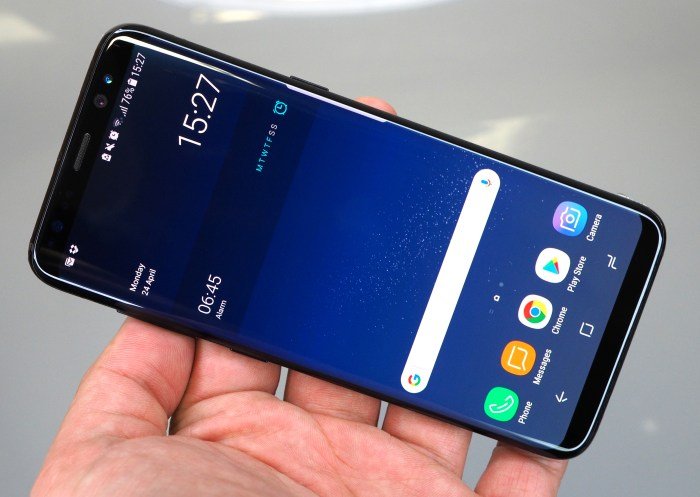Galaxy Watch battery optimization is crucial for getting the most out of your wearable. Draining battery too quickly? We’ll explore the common culprits behind rapid depletion, from power-hungry hardware components and software features to the impact of ambient mode. Discover how to fine-tune your settings and make informed choices to extend your watch’s lifespan.
This guide will help you understand everything from initial charging practices to advanced techniques, empowering you to take control of your Galaxy Watch’s battery performance. We’ll cover settings adjustments, app management, network optimization, power-saving modes, and even hardware considerations. Prepare to unlock the full potential of your Galaxy Watch and enjoy longer-lasting power.
Galaxy Watch Battery Optimization: Maximize Your Wearable’s Endurance
The Galaxy Watch is a feature-rich smartwatch, but its battery life can sometimes leave users wanting more. This guide dives deep into optimizing your Galaxy Watch’s battery performance, helping you get the most out of your device. From understanding the culprits behind battery drain to implementing advanced saving techniques, we’ll cover everything you need to know to extend your watch’s uptime.
Understanding Galaxy Watch Battery Drain
Understanding what drains your Galaxy Watch battery is the first step towards optimization. Several factors contribute to rapid battery depletion.
- Common Causes: The Always-On Display, frequent use of GPS, continuous heart rate monitoring, excessive notifications, and background app activity are primary contributors to battery drain.
- Hardware & Software Culprits: The display (especially at high brightness), the processor, the GPS module, and the sensors (heart rate, accelerometer, etc.) are the main hardware components that consume power. Software features like Wi-Fi, Bluetooth, and the constant syncing of data also play a significant role.
- Ambient Mode’s Impact: The Always-On Display (AOD) significantly impacts battery life. While it provides convenience, it keeps the display active, consuming more power. Adjusting brightness and setting a shorter screen timeout can minimize drain. Consider using “tap to wake” instead of AOD.
Initial Battery Optimization Steps
The way you treat your Galaxy Watch from the start can influence its long-term battery performance.
- Initial Charge Cycle: While modern batteries don’t necessarily require a full charge and discharge cycle to “break in,” it’s still advisable to fully charge your new Galaxy Watch before the first use. This helps the watch calibrate its battery monitoring system.
- Model Comparisons: Battery life varies between different Galaxy Watch models. For example, the Watch 5 generally offers better battery life than the Watch 4, thanks to improvements in processor efficiency and battery capacity. The larger watch sizes typically offer better battery life.
- Charging Practices: Avoid completely draining the battery to 0% frequently. It’s best to charge the watch when it reaches around 20%. Use the provided charging cable and a wall adapter (or a compatible wireless charger). Avoid overnight charging, which can potentially degrade the battery over time.
Settings Adjustments for Enhanced Battery Life

Source: ephotozine.com
Fine-tuning your watch’s settings can dramatically improve battery life.
- Disable Unnecessary Features: Turn off the Always-On Display and raise-to-wake functionality if you don’t frequently use them. This can save a significant amount of power.
- Manage Background App Refresh: Limiting background app refresh prevents apps from constantly updating in the background, conserving battery.
- Watch Faces and Complications: More complex watch faces with numerous complications consume more power. Simple watch faces with fewer elements are more battery-friendly.
| Feature | Impact | Recommended Action | Estimated Battery Saving |
|---|---|---|---|
| Always-On Display | High | Disable or set to “Tap to Show” | 15-30% |
| Raise-to-Wake | Medium | Disable | 5-10% |
| Complex Watch Faces | Medium | Use simpler watch faces | 5-10% |
| Frequent Notifications | Medium | Limit notifications | 5-10% |
Application Management and Optimization
Managing the apps on your Galaxy Watch is crucial for battery optimization.
- Identify Battery-Hungry Apps: Check the battery usage section in your watch’s settings to identify apps consuming the most power.
- Uninstall or Disable Apps: Uninstall apps you rarely use. If uninstalling isn’t possible, disable them to prevent background activity.
- Limit App Notifications: Reduce the number of notifications you receive from each app. This reduces the frequency with which the watch needs to wake the display.
| App Name | Usage Time | Battery Drain Percentage | Recommended Action |
|---|---|---|---|
| Samsung Health | 60 minutes (workout) | 15% | Adjust workout settings (GPS, heart rate) |
| Spotify | 30 minutes (streaming) | 10% | Download music for offline playback |
| Messaging Apps | Variable (notifications) | 5-10% | Limit notifications, disable previews |
Network and Connectivity Optimization
Network and connectivity features can significantly impact battery life.
- Bluetooth, Wi-Fi, and Cellular: Bluetooth, Wi-Fi, and cellular connectivity all consume power. Bluetooth uses less than Wi-Fi, and Wi-Fi uses less than cellular.
- Enable/Disable Wi-Fi and Cellular: Turn off Wi-Fi and cellular data when not needed. Use Wi-Fi only when necessary, and consider disabling cellular data when you’re in areas with poor signal strength.
- Optimize Bluetooth Connections: Keep Bluetooth enabled when connected to your phone. Ensure the connection is stable to avoid constant reconnecting, which drains battery.
- GPS Usage: GPS is a significant power consumer. Limit GPS usage to when it’s essential (e.g., during workouts). Use GPS only when necessary.
Power Saving Modes and Features
The Galaxy Watch offers various power-saving modes to extend battery life.
- Power Saving Modes: The Galaxy Watch offers several power-saving modes, each with varying degrees of impact on functionality.
- Mode Comparison: There are usually modes like “Power Saving,” which limits background activity, and “Watch Only,” which disables all smart features and provides only basic timekeeping.
- Activating and Customizing Modes: Access the power-saving modes through the quick settings panel or the settings menu. You can often customize which features are disabled or restricted.
- Power Saving Mode:
- Trade-offs: Limits background activity, reduces brightness, and disables some features.
- Functionality: Still allows for notifications and basic watch functions.
- Watch Only Mode:
- Trade-offs: Disables all smart features, including notifications and heart rate monitoring.
- Functionality: Provides basic timekeeping.
Advanced Battery Saving Techniques, Galaxy Watch battery optimization
Going beyond the basics, some advanced techniques can further optimize battery life.
- “Watch Only” Mode: This mode turns the Galaxy Watch into a basic timepiece, extending battery life significantly by disabling all smart features.
- Battery Calibration: Although not always necessary, calibrating the battery can sometimes improve the accuracy of the battery level indicator.
- Maintaining Battery Health: Avoid extreme temperatures, and try to keep the battery between 20% and 80% charge for optimal longevity.
Advanced techniques include utilizing “Watch Only” mode when extended battery life is crucial, calibrating the battery occasionally to maintain accuracy, and avoiding extreme temperatures. These practices, along with proper charging habits, contribute to preserving the battery’s health over time.
Troubleshooting Battery Issues
Sometimes, even with optimization, battery issues can arise.
- Common Problems: Rapid battery drain, inaccurate battery level readings, and unexpected shutdowns are common issues.
- Troubleshooting Guide: Check for background app activity, ensure the software is up to date, and try restarting the watch.
- Factory Reset: If the problem persists, a factory reset can often resolve software-related battery issues. This will erase all data on your watch, so back up important information beforehand.
- Issue: Rapid Battery Drain
- Possible Solutions: Disable Always-On Display, limit background app refresh, check for battery-hungry apps, and ensure the software is updated.
- Issue: Inaccurate Battery Level Readings
- Possible Solutions: Calibrate the battery, restart the watch, and ensure the software is up to date.
- Issue: Unexpected Shutdowns
- Possible Solutions: Fully charge the watch, limit background app activity, and consider a factory reset.
Hardware Considerations and Battery Replacement
The lifespan of your Galaxy Watch battery is finite.
- Battery Lifespan: Factors such as charging habits, usage patterns, and environmental conditions affect battery lifespan.
- Battery Replacement: Eventually, the battery’s capacity will degrade. Battery replacement is possible, typically performed by authorized service centers or qualified technicians.
- Cost and Process: The cost of battery replacement varies depending on the model and service provider. The process usually involves opening the watch and replacing the battery cell.
- Third-Party Risks: Using third-party battery replacement services may void the warranty or risk damage to the watch if not done correctly. Always research the provider and ensure they use quality parts.
Summary
From initial setup to advanced troubleshooting, we’ve covered the essential steps for Galaxy Watch battery optimization. By implementing these strategies, you can significantly improve your smartwatch’s battery life, ensuring it keeps pace with your active lifestyle. Embrace these techniques, and experience the freedom of a Galaxy Watch that lasts longer, performs better, and keeps you connected without constant charging concerns. Take control of your battery and enjoy your Galaxy Watch to the fullest!
